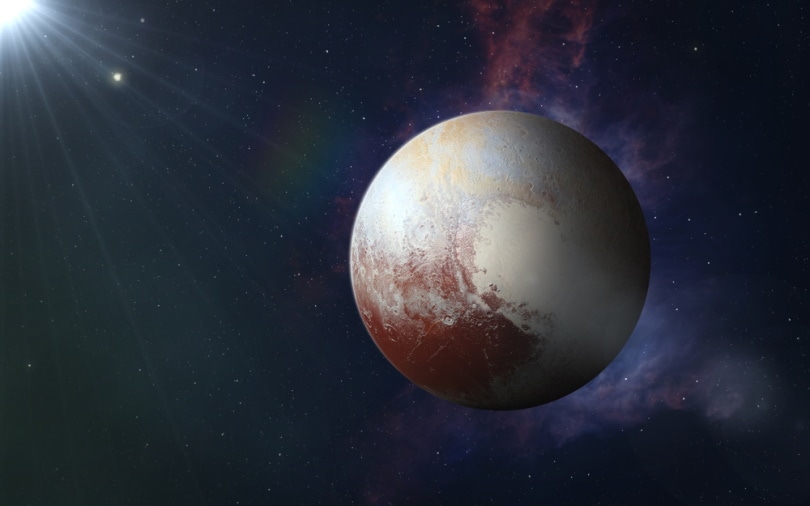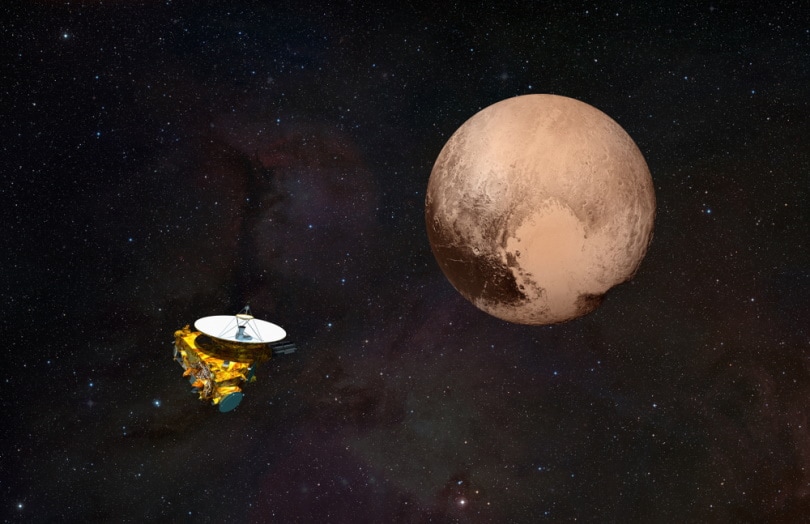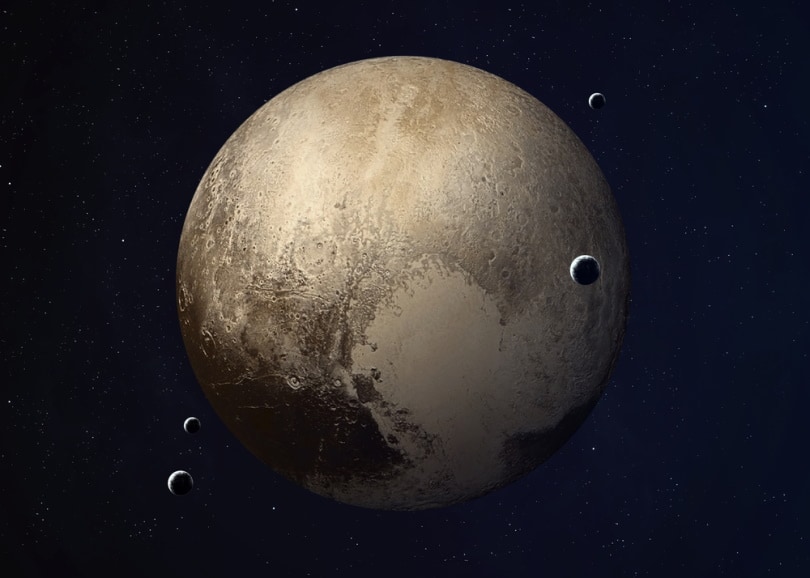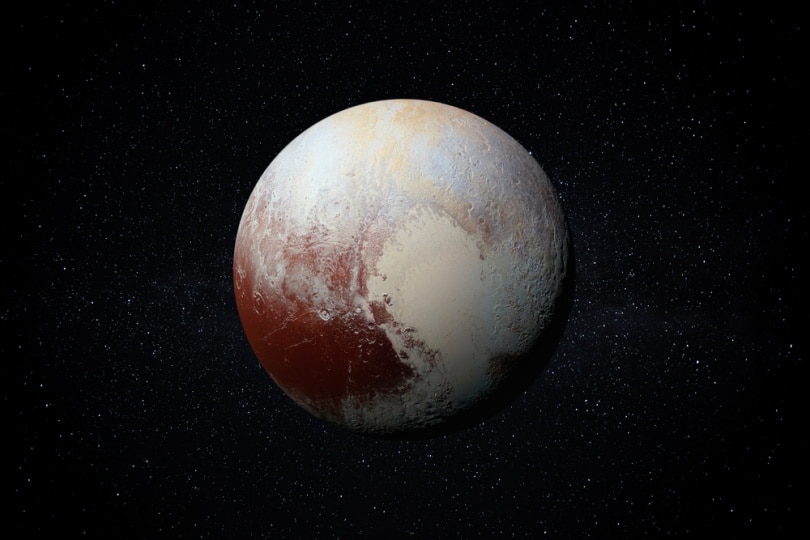How Far Is Pluto From Earth? What You Need To Know!
Last Updated on

For 75 years, it stood as the furthest planet from the sun: the outlier of our solar system. Pluto was the runt of our planetary litter, and we loved it for being that way. It’s no wonder that, when it lost its status as a planet and was reduced to a “dwarf planet” in 2006, there was across-the-board irritation by scientists and laypeople alike.
How far is Pluto from Earth? That depends on where it is in its elliptical orbit. When this former planet is closest to our home, we’re about 2.66 billion miles (4.28 billion kilometers) away. However, when Earth and Pluto are on different sides of the sun, we’re quite a bit further apart: 4.67 billion miles (7.5 billion kilometers).

How Long Would It Take To Get to Pluto From Earth?
Pluto, as we know, is furthest from the sun, making it furthest from Earth also. That means a trip to our dwarf planet neighbor would be long and arduous. The interesting thing about Pluto is that it’s in a much more elliptical orbit than Earth and the rest of the planets. That’s why there’s such a big difference when it’s closest and farthest from us.
The easiest way to say how long it would take to get to Pluto from Earth is to take the New Horizons spacecraft as an example. Launched in January of 2006, New Horizons finally reached Pluto 9 years and 5 months later, on July 14, 2015. One of the first questions answered by New Horizons was the exact size of Pluto. It is 1,470 miles in diameter (2,370 kilometers), relatively small compared to Earth’s 7,926 miles (12,742 kilometers) diameter.

How Long Does It Take Sunlight To get to Pluto?
As you might imagine, it takes sunlight significantly longer to reach Pluto than it does to reach Earth. Pluto orbits 40 times further from the sun than the Earth, and it takes sunlight approximately 5.5 hours to get there. That’s considerably longer than the 8.3 minutes it takes sunlight to reach Earth. What’s truly fascinating is that it takes about the same amount of time for sunlight reflecting off of Pluto to reach our planet. By the time it does, the light spreads out considerably, making Pluto look extremely dim and practically impossible to see with the naked eye.
Can Humans Visit Pluto?
Currently, it would be impossible for humans to reach Pluto. We don’t have the propulsion systems capable of sending a large enough spacecraft so far out into space. Also, consider that no small spacecraft capable of supporting human life has ever survived longer than 2 years in the unforgiving reaches of the cosmos. It would take considerably longer to reach Pluto, and the astronauts would be utterly alone and helpless if an accident were to occur.
There was a project proposed back in the 1950s called Project Orion that looked at using nuclear bombs to get humans to Pluto much faster. The project was the dream of British physicist Freeman Dyson who postulated that humans could reach Pluto in about 2 years by using nuclear bombs for thrust. The challenge, of course, would be to make a spacecraft that could handle the incredible stress of several nuclear blasts (and slow back down again when it reached the dwarf planet).

How Long Would It Take To Drive to Pluto?
It can be difficult for humans to wrap their minds around the staggering distance between Earth and Pluto. Many of us have a hard time grasping the 25,000-mile circumference of the Earth or the 238,855-mile distance to our moon. Pluto is significantly further, with an average of 3,7 billion miles away depending on its elliptical location. Put in another perspective, the Stone Age transpired about a billion hours ago.
However, another way to think of the distance is to look at how long it would take to drive a car to Pluto. Astrophysics professor Adam Frank asked this question several years ago and came up with the answer: 6,293 years. That’s the time it would take a family of 4 driving 65 miles per hour to reach our dwarf planet neighbor. However, Professor Frank also calculated the time it would take to fly to Pluto in a Boeing 777 going 590 miles per hour (its maximum speed). That would be a significantly shorter trip of about 680 years.

Is Pluto a Planet?
We couldn’t talk about Pluto without mentioning that, even among scientists, there is debate about its status as a planet like Earth, Mercury, Mars, and the rest. If you ask the astronomers at the International Astronomical Union (IAU), they will tell you that, no, Pluto is not a planet but instead a dwarf planet. However, planetary scientists believe that the IAU made a mistake and that Pluto is, indeed, a genuine planet.
One of those planetary scientists is Dr. Alan Stern, leader of the New Horizons Mission at NASA that made it to Pluto in 2015. In 2021, while speaking at the “ I Heart Pluto Festival,” Dr. Stern argued that the IAU’s position, in his words, “doesn’t make scientific sense.” He went on to comment that “the IAU’s definition was created by non-experts (astronomers), who study stars…’, adding that “they botched it.” Many other scientists feel the same way and want to see Pluto’s designation changed back to a planet. However, at this time, Pluto is still designated as a dwarf planet rather than being given back its full planetary status.


Final Thoughts
Although it may no longer be considered a planet, Pluto still holds a place in humanity’s heart. While it may seem unimaginably far away, it’s still closer to Earth than billions of other stars, planets, and dwarf planets. Humanity has made the trip to our furthest neighbor, albeit in the form of a small, unmanned spacecraft.
Will we ever make it to Pluto in person and stand on its surface? Possibly, but it’s going to take a lot more time, energy, and technological advances to do so. That includes the invention of hyper-sleep, which is still relegated to science fiction rather than science fact. Until then, Pluto will remain one of our favorite (and most contentious) astrological neighbors.
Featured Image Credit: buradaki, Shutterstock
About the Author Greg Iacono
Greg Iacono is a self-taught writer and former chiropractor who, ironically, retired early due to back problems. He now spends his time writing scintillating content on a wide variety of subjects. Greg is also a well-known video script writer known for his ability to take a complex subject and make it accessible for the layperson.
Related Articles:
How to Collimate Binoculars: 9 Expert Tips
How to Clean a Refractor Telescope: Step-by-Step Guide
How to Clean a Telescope Eyepiece: Step-by-Step Guide
What Is the Best Binocular Magnification for Hunting? Optical Features Explained
How to Clean a Rifle Scope: 8 Expert Tips
When Were Binoculars Invented? History, Today & Future
Can You Use Binoculars to Look At Stars? How to Choose the Right Pair
How to Choose Binoculars for Bird Watching: 10 Expert Tips
